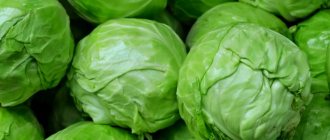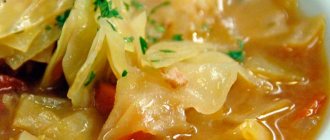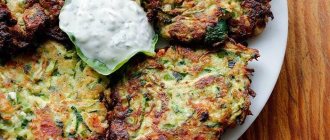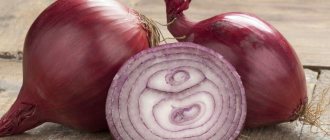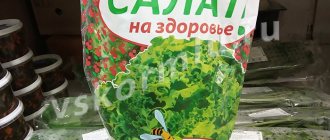Sauerkraut can have a negative effect on the functioning of the baby’s digestive tract. It contains spicy spices, salt, and a large amount of acid. Sauerkraut during breastfeeding in some situations provokes stomach colic, poisoning, and deterioration of stool in a small child.
The product contains quite a lot of salt. Sauerkraut can cause dehydration. At the same time, when there is a lack of fluid in a woman’s body, the process of milk production worsens. Therefore, during breastfeeding, it is recommended to limit the consumption of sauerkraut, pickled products, and pickles as much as possible.
Should you categorically refuse healthy food while breastfeeding?
The product has a pleasant taste and perfectly satisfies hunger. Therefore, a reasonable question arises: can a nursing mother eat sauerkraut in moderation? If the dish is prepared at home in strict accordance with the recipe, a woman can occasionally treat herself to a hearty product. After all, after the baby reaches the age of 4 months, a nursing mother can eat a small amount of pickled or salty foods. In this case, you need to pay attention to the following nuances:
- if the baby has problems with stool or colic, it is recommended to exclude the product from the diet;
- When eating sauerkraut, you should drink enough liquid. This is necessary to maintain optimal water-salt balance.
Is it possible to make an exception?
When you really want a prohibited product, allow yourself 1-2 spoons. After this, watch your child carefully. If your baby is acting more restless than usual, put off gratifying your desires until later.
Besides the negative aspects, there is still an incentive to consume sauerkraut. Useful properties of the product:
- The product is rich in fiber. Eating this vegetable helps improve the digestion process. It is important for women suffering from constipation to include similar dishes in the menu;
- Cabbage is a source of vitamins. During the cold season, this is a great way to saturate the body with useful microelements;
- Sauerkraut contains natural antibacterial substances. They prevent the occurrence of decay processes in the intestines;
- Sauerkraut included in the diet helps increase appetite. This is important for those who suffer from a lack of desire to eat. Lactation, in turn, depends on adequate nutrition.
Having compared all the pros and cons, each mother independently decides how to organize nutrition correctly, so as not to harm the baby and not torment herself with senseless refusals of delicious food.
Composition and use of the product
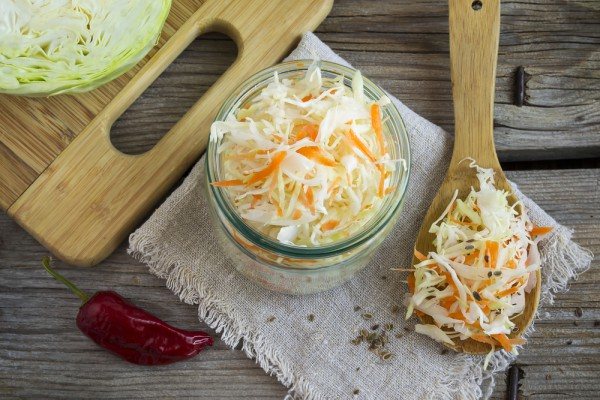
Some female representatives are also concerned about another question: can a nursing mother have sauerkraut if the child is not yet 3-4 months old? The dish often causes flatulence in infants. Experts recommend refraining from eating dishes containing white cabbage in the first 3-4 months of a child’s life.
Sauerkraut is useful for a nursing mother because during canning quite a lot of lactic acid is formed in it. This substance is released as a result of the fermentation of salt and sugar. The following components are also present in pickled vegetables:
- vitamin A;
- ascorbic acid;
- vitamin B9.
Cabbage contains boron, potassium and other nutrients.
When breastfeeding, you should not include pure sauerkraut in your daily menu. It is most often added to vinaigrettes and first courses. If a child shows signs of an allergic reaction, the introduction of the product into the daily menu is postponed (for approximately one month).
What are the benefits of sauerkraut for a nursing mother?
But let's again dwell on the positive properties of this traditional treat in order to understand why cabbage from a barrel enjoyed universal love in Rus'.
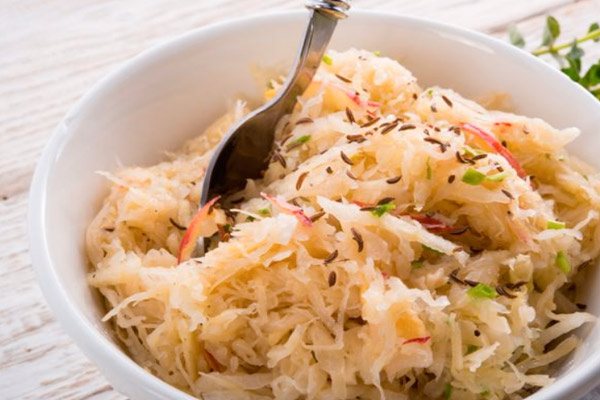
Vitamin C
Few nursing mothers know that cabbage leaves are rich in vitamin C. And there is much more of it than, for example, in lemons or oranges.
This means that if there is a deficiency of ascorbic acid, it is much more reasonable to lean on cabbage rather than citrus fruits. In addition, during fermentation, all the vitamins and minerals in this dish are preserved without being destroyed or disintegrated. That is why, with regular consumption of cabbage dishes, you can significantly increase your immunity and even resist seasonal viral infections.
Cellulose
Since sauerkraut does not undergo heat treatment, its fibers remain almost in their original form. Therefore, the snack perfectly cleanses the intestines and even allows you to lose weight, which will especially appeal to those nursing mothers who cannot quickly lose weight after giving birth. People even have a diet based on sauerkraut, but, of course, you should not resort to it during lactation.
Important product properties

A tasty dish is useful during lactation. It normalizes metabolism and eliminates constipation. Sauerkraut prevents the formation of fat deposits and fills the body with nutrients. The product helps normalize acidity levels. Sauerkraut reduces the likelihood of malignant tumors and stomach ulcers and speeds up the process of digesting food.
Sauerkraut during breastfeeding increases the body's resistance to stressful situations and helps cope with symptoms of depression. The product improves appetite and strengthens the cardiovascular system. Sauerkraut strengthens the immune system and gives vitality. The dish improves the condition of the hematopoietic system, reduces blood glucose levels, and eliminates manifestations of vitamin deficiency. The product helps fight nausea.
Sauerkraut can be used to make compresses that are applied to the mammary gland when a feeling of heaviness or pain occurs. Sauerkraut reduces the inflammatory process and neutralizes the activity of harmful bacteria. The product prevents the appearance of lactostasis and eliminates swelling in the mammary glands. It is beneficial for the skin of a nursing mother. Sauerkraut has a rejuvenating effect and promotes cell regeneration.
Benefit
The process of pickling white cabbage occurs with the help of lactic acid, which is formed during the natural fermentation of sugars contained in cabbage juice and table salt. The product turns out tasty, piquant, moderately sour, crispy. Sauerkraut contains a large amount of vitamin C (20 mg per 100 g), which is very necessary in winter. It is also worth noting vitamins B, A, K, folic acid, and microelements I, Fe, Ca, K, Mg, Se. Of particular value are lactic acid bacteria, which directly ferment cabbage. Once in our intestines, they normalize beneficial microflora and suppress harmful ones, which is very useful for dysbiosis. Sauerkraut also improves intestinal function. The properties of this product have already been proven to reduce cholesterol levels in the blood and prevent the development of cancer tumors.
Rules for introducing the product into the daily menu
When introducing a dish into your daily menu, you must adhere to the following recommendations:
- initially it is recommended to eat no more than two spoons of the dish;
- the product should not be eaten in the afternoon;
- You need to closely monitor the child’s reaction to a new dish.
Initially, sauerkraut should be added to cabbage soup. In this dish, the vegetable is thoroughly boiled. There are many other products in cabbage soup. Therefore, the amount of sauerkraut in the dish is small. Then you can put the vegetable in the vinaigrette. A healthy salad contains many vitamins and other nutrients.
In addition, sauerkraut can be stewed in a frying pan or in a cauldron. It is recommended to consume no more than two tablespoons of stewed vegetables. It goes well with a variety of side dishes.
Useful material
Rich in vitamins and beneficial microelements, the absorption of which is improved due to the content of probiotics. – which cabbage is healthier, sauerkraut or fresh?
During the fermentation process, the vegetable acquires a huge amount of additional substances and organic acids, so sauerkraut is more useful than fresh cabbage.
Application in cosmetology:
- to improve skin color, the fermented product should be crushed as much as possible, make a face mask for 15 minutes, rinse with water and apply cream;
- for wrinkles 2 tablespoons of cabbage brine are mixed with one yolk and a spoon of olive oil. The mass is applied to the face for 20 minutes and washed off;
- to combat acne and acne, once a week you need to apply a napkin soaked in brine to your face for 15-20 minutes;
- to strengthen hair, mix honey with sauerkraut liquid in a 1:1 ratio and rub into the roots an hour before washing your hair;
- To soften the skin of the hands, 100 ml of brine is mixed with the same amount of fatty kefir; hand baths are made in this mixture for up to 20 minutes.
Cooking method
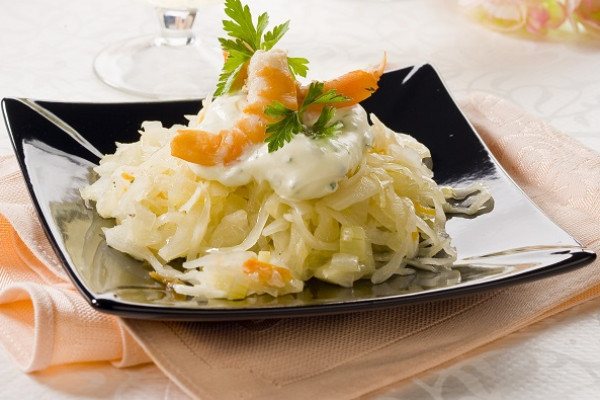
To make sauerkraut, take a container made of glass and enamel. In dishes made from other materials, the product oxidizes during fermentation. It is worth abandoning ready-made sauerkraut purchased in the store. This product contains acetic acid in abundance. As a result, the product loses its medicinal properties.
The dish contains the following components:
- 750 grams of white cabbage;
- 0.25 kg carrots;
- sugar (about 1.2 tablespoons);
- salt - in the amount of one tablespoon.
The step-by-step recipe for making sauerkraut is as follows:
- The head of cabbage is carefully washed.
- Cabbage and carrots are carefully chopped.
- Mix these ingredients thoroughly.
- The required amount of salt and sugar is added to the dish.
- Grind carrots and cabbage until the juice releases.
- Finely chopped dill and a little black pepper (in peas) are added to the dish.
- The resulting mixture is placed in a convenient container made of glass in a dense layer.
- The container is carefully sealed with a lid.
- A glass jar of sauerkraut is left for three days in a room where the air temperature does not exceed 25 degrees. The film must be periodically removed from the surface of the sauerkraut. The vegetable is pierced with a small stick twice a day.
- After three days, the container with cabbage is placed in a room with low air temperature for 2 weeks.
To reduce the likelihood of increased gas formation in your baby, you can add cumin to the dish.
Pickling recipes
Classic recipe
Ingredients:
- 2 kg of white cabbage;
- carrot;
- 35 g salt;
- black pepper;
- Bay leaf.
Preparation: Chop and grate the vegetables, mix with salt and spices until the juice begins to release. Cover the pan with a lid of a smaller diameter and press down on top with a weight. Leave at room temperature for several days, piercing it with a wooden stick once a day to release the formed gases. After 3-4 days, put into jars and put in the refrigerator.
In the bank
If pickles have become a daily addition to a nursing mother’s dinner table, it is recommended to adhere to one more rule - making winter preparations with your own hands. The process of preparing cabbage is not complicated.
Recipe for pickling in a jar:
- shred cabbage (5 kg);
- grate carrots (3 pcs.);
- vegetables are mixed and ground with salt (3 tbsp);
- compacted under pressure.
Fermentation takes 3-4 days in a warm room. An enamel bucket or pan is used as a container; it will also be convenient in 3-liter jars. The container is not filled to the top - during fermentation the brine will rise and may leak out.
The readiness of the dish is judged by the abundant foam “cap”. To prevent the product from becoming bitter, punctures are made in several places at the beginning of fermentation with a small wooden stick - this will help the bubbles rise to the surface more freely. Their abundant appearance is another sign of readiness. Now you can take the cabbage out into the cold and let it sit for 1-2 days.
There is not a single product harmful to a woman in this recipe, but she should take into account that pickles provoke dehydration of the body. If a nursing mother eats sauerkraut every day, there is a need to increase fluid intake, which is not advisable for severe edema, but is beneficial for lactation.
Pickled Chinese cabbage
Ingredients: one and a half kilograms of Chinese cabbage, 3-4 cloves of garlic, 1 bag of live sourdough, 30 g of salt, 1 bag of stevia, a bunch of dill.
Preparation: Dissolve the starter and stevia in a glass of warm water. Chop the cabbage into a saucepan, removing the stem. Add chopped dill, grated carrots, squeeze out the garlic and add salt. Pour in the solution with sourdough and stevia, add water until all the cabbage is covered. Place under a load and leave in a warm place for three days. Place in a clean bowl and put in the refrigerator.
Recipe for making aromatic cabbage soup
The nutritious dish is cooked in meat, mushroom or vegetable broth. To prepare two servings of soup you will need the following ingredients:
- 3 potatoes;
- 250 grams of sauerkraut;
- 1 carrot;
- 1 onion;
- a little dill and parsley;
- 1 tomato;
- 2 garlic cloves;
- a small amount of lean beef;
- ground pepper.
First, boil the meat for 30 minutes. Then add diced potatoes. After 15 minutes, add sauerkraut to the dish. After 15 minutes, slices of onion, tomato and carrot are added to the dish. Vegetables are pre-fried in vegetable oil. After this, cook the soup over low heat for 10 minutes. At the end of cooking, add chopped herbs to the cabbage soup.
When consuming sauerkraut in large quantities, heartburn occurs. The product should not be eaten if you have hypertension or cardiac dysfunction.
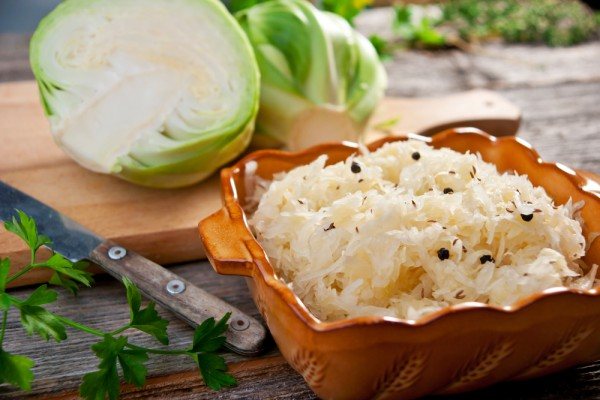
- Related Posts
- Is it possible to drink mineral water while breastfeeding?
- Is pomelo good for a nursing mother? To eat or not to eat?
- Pizza while breastfeeding: recipes
« Previous entry
After 6 months
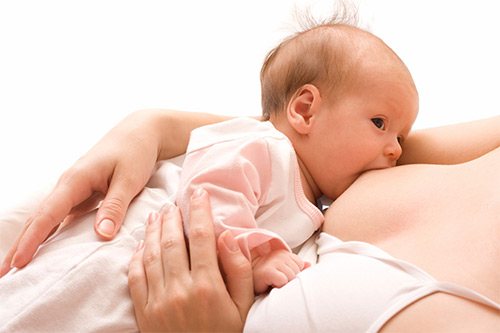
If a woman decides to breastfeed for up to a year or more, food restrictions will no longer be so strict. Mom can relax provided:
- 6 or more months have passed since birth;
- breast milk becomes not the main source of nutrition for the baby;
- complementary foods for a child include porridge, vegetable and fruit purees, which are easily digested;
- no allergic reactions;
- no constipation or stomach upsets.
If there are no contraindications, you can enjoy your favorite food. Over time, you will even return to chocolate, legumes, citrus fruits, pickled and pickled vegetables.
As for sauerkraut, the conclusion is obvious. It is better to refuse it at first. For the first six months, refrain from adding this vegetable to your diet. At a certain time, slowly begin to introduce raw, boiled, pickled and stewed cabbage into the menu.
When it’s closer to a year, there is no need to fear that the food eaten by the mother will cause digestive upset in the breastfed baby. There is no need to forget about your favorite dishes for the entire period of guards. The main requirement is healthy eating. To maintain the good health of your baby, monitor your own health.

Not only the quality of her milk, but also the nutrition of the child depends on the correct and complete nutrition of a nursing mother. You can often see a picture where a mother unnecessarily limits herself in the consumption of many foods. Such restrictions also include sauerkraut during breastfeeding. Often young mothers do not know whether they can eat such cabbage.
Digestive characteristics of infants are associated with an increased risk of colic. This is natural and goes away on its own with time. By the age of three months, most problems disappear.
In some maternity hospitals, young mothers are fed soups made from fresh vegetables, which does not always lead to negative consequences. Colic in a child is an inevitable phenomenon that is not related to the mother’s diet.
How to prepare cabbage
The simplest cooking recipe does not include anything complicated. This way you get tender cabbage with a pleasant sourness. For pickling, it is better to choose heads of cabbage with edges flattened on both sides.
- finely chop the cabbage;
- add grated carrots up to 50% of the bulk;
- measure 40-50 grams of salt and mix with a small amount of sugar to speed up fermentation, add dill;
- thoroughly mash the vegetables with prepared spices;
- crush and compact well, place pressure on top and leave for 3 days at room temperature;
- 2 times a day you need to make holes in the cabbage with a wooden stick to allow excess gas to escape;
- After three days, put the cabbage in the cold.
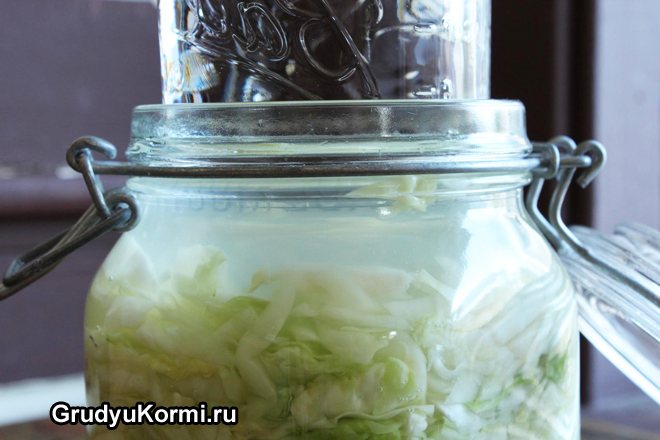
Does eating cabbage during breastfeeding cause increased gas formation?
Breastfeeding experts say breastfeeding mothers do not need to follow special diets. Nutrients from mother's food enter breast milk 4-6 hours after eating, it all depends on the woman's metabolism. It has always been believed that foods that are “heavy” for a child’s stomach, such as cabbage or legumes, increase gas formation. But recent expert research proves that the formation of gases is not directly related to the consumption of certain foods. In the first months of life, increased gas formation in the intestines of infants is associated with the immaturity of the digestive system, so almost all children suffer from intestinal colic.
Gases are only the result of the digestive process. Food (namely carbohydrates), entering the stomach, begins to be actively digested by bacteria. When digested, gases are released. They enter the intestines and can accumulate there. But the gases formed in the mother’s intestines cannot pass into breast milk. Through breast milk, the baby can receive starches and sugars, which, when broken down, produce their own gases in the baby’s intestines.
And cabbage during lactation is not necessarily to blame for gas formation. Intestinal colic in children occurs after potatoes, baked goods and other foods. In addition, the reasons for increased gas formation may lie in other factors:
- In large quantities of milk.
- Improper grip on the bottle (or breast).
- In an incorrectly selected bottle nipple.
- In a formula unsuitable for the child.
The diet of every person should be balanced and complete. The same rule applies to the nutrition of a nursing mother. You cannot unreasonably refuse certain foods, be it cabbage, peas or even chocolate. You just need to follow the important principles: gradualism and moderation.
To ensure that eating cabbage during breastfeeding does not bring any negative consequences, you need to follow some recommendations:
- Do not eat cabbage in any form in the first month after giving birth. In the second or third month of a baby’s life, gradually begin to consume stewed vegetables in small quantities.
- Although white cabbage is a hypoallergenic product, the baby’s reaction must be monitored throughout the day. If a child develops a rash, cabbage will need to be avoided for a while.
- If you really want cabbage, but you're worried about your baby's tummy, start with more tender varieties: broccoli, cauliflower or Brussels sprouts. But it should be remembered that mother should not overeat with such varieties.
- Can a nursing mother have fresh cabbage? Introduce raw cabbage into your diet no earlier than 3-4 months of your baby’s life. Of course, although it is very healthy, it consists of coarse fiber, which takes a long time to digest.
- Sauerkraut for a nursing mother is a permitted product, but you can eat it starting from the second half of the year after giving birth, provided that it does not contain a lot of vinegar and seasonings. It is not recommended to eat sauerkraut in the first 5-6 months after childbirth.
- To protect yourself from excessive gas formation when eating fresh or sauerkraut, add a pinch of cumin to the dish.
- Watch your child. If the vegetable you ate caused your child to become restless, then you should think about whether it is possible to eat it a second time.
Restrictions
You should not overuse pickled vegetables and eat them too often if you have diseases of the digestive system. These include gastritis, ulcers and a tendency to diarrhea. In such situations, they can intensify negative symptoms and cause increased discomfort.

During the fermentation process, a considerable amount of acid accumulates in cabbage. A lot of salt is also added for preservation. These factors do not make this product the healthiest. If you are breastfeeding, you should not eat sauerkraut too often. But you shouldn’t exclude it from your diet either.
White cabbage is a rich source of ascorbic acid, which is so necessary for immunity. When fermented, its quantity multiplies. A young mother especially needs this valuable vitamin. Moderate inclusion of pickled vegetables in the diet will benefit not only the nursing woman, but also her entire family.

